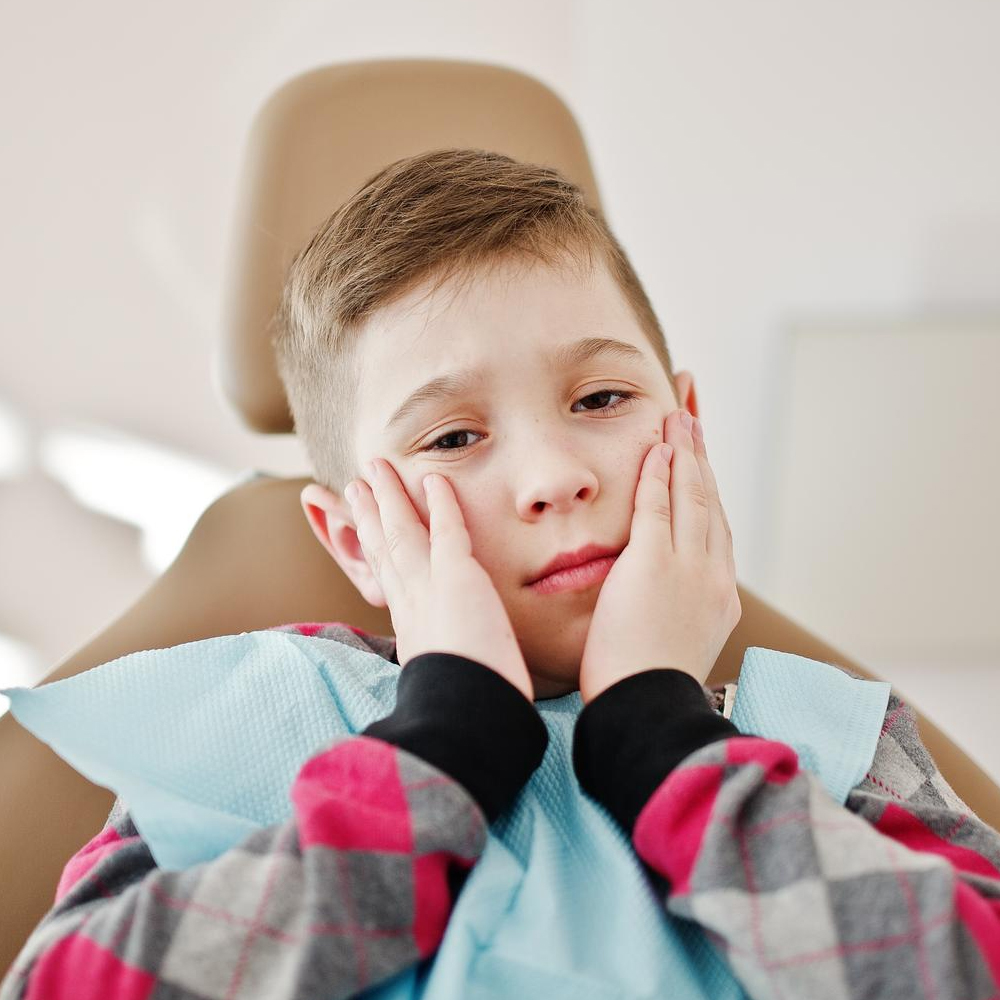We are not a registered HMO/Medicare/Medicaid provider instead, try our Membership Plan
Dental Emergencies
Common Dental Emergencies and Injuries
Although dental injuries and dental emergencies are often distressing for both children and parents, they are also extremely common. Approximately one third of children have experienced some type of dental trauma, and more have experienced a dental emergency.
There are two peak risk periods for dental trauma - the first being toddlerhood (18-40 months) when environmental exploration begins, and the second being the preadolescent/adolescent period, when sporting injuries become commonplace.
Detailed below are some of the most common childhood dental emergencies, in addition to helpful advice on how to deal with them.

TOOTHACHE

HOW YOU CAN HELP With Toothache
- Cleanse the area using warm water. Do not medicate or warm the affected tooth or adjacent gum area.
- Check for impacted food and remove it as necessary.
- Apply a cold compress to the affected area to reduce swelling.
- Contact the pediatric dentist to seek advice.
DENTAL AVULSION (KNOCKED-OUT TOOTH)
HOW YOU CAN HELP with DENTAL AVULSION
- Recover the tooth. Do not touch the tooth roots! Handle the crown only.
- Rinse off dirt and debris with water without scrubbing or scraping the tooth.
- For older children, insert the tooth into its original socket using gentle pressure, or encourage the child to place the tooth in the cheek pouch. For younger children, submerge the tooth in a glass of milk or saliva (do not attempt to reinsert the tooth in case the child swallows it).
- Do not allow the tooth to dry during transportation. Moisture is critically important for reimplantation success.
- Visit the pediatric dentist (where possible) or take the child to the Emergency Room immediately –time is critical in saving the tooth.
Dental intrusion (tooth pushed into jawbone)
Sometimes, dental trauma forces a tooth (or several teeth) upwards into the jawbone. The prognosis is better for teeth that have been pushed up to a lesser extent (less than 3mm), but every situation is unique. Oftentimes, the force of the trauma is great enough to injure the tooth’s ligament and fracture its socket.
If dental intrusion of either the primary or permanent teeth is suspected, it is important to contact the pediatric dentist immediately. Depending on the nature and depth of the intrusion, the pediatric dentist will either wait for the tooth to descend naturally, or perform root canal therapy to preserve the structure of the tooth.
HOW YOU CAN HELP with Dental intrusion
- Rinse the child’s mouth with cold water.
- Place ice packs around affected areas to reduce swelling.
- Offer Tylenol for pain relief.
- Contact the pediatric dentist where possible, or proceed to the Emergency Room.

Tooth Displacement
Tooth displacement is generally classified as “luxation,” “extrusion,” or “lateral displacement,” depending on the orientation of the tooth following trauma. A luxated tooth remains in the socket – with the pulp intact about half of the time. However, the tooth protrudes at an unnatural angle and the underlying jawbone is oftentimes fractured.
The term “extrusion” refers to a tooth that has become partly removed from its socket. In young children, primary tooth extrusions tend to heal themselves without medical treatment. However, dental treatment should be sought for permanent teeth that have been displaced in any manner in order to save the tooth and prevent infection. It is important to contact the pediatric dentist if displacement is suspected.

How you can help with Tooth Displacement
- Place a cold, moist compress on the affected area.
- Offer pain relief (for example, Children’s Tylenol).
- Contact the pediatric dentist immediately.
Crown fracture
The crown is the largest, most visible part of the tooth. In most cases, the crown is the part of the tooth that sustains trauma. There are several classifications of crown fracture, ranging from minor enamel cracks (not an emergency) to pulp exposure (requiring immediate treatment).
The pediatric dentist can readily assess the severity of the fracture using dental X-rays, but any change in tooth color (for example, pinkish or yellowish tinges inside the tooth) is an emergency warning sign. Minor crown fractures often warrant the application of dental sealant, whereas more severe crown fractures sometimes require pulp treatments. In the case of crown fracture, the pediatric dentist should be contacted. Jagged enamel can irritate and inflame soft oral tissues, causing infection.
How you can help With Crown fracture
- Rinse the child’s mouth with warm water.
- Place a cold, moist compress on the affected area.
- Offer strong pain relief (for example, Children’s Tylenol).
- Pack the tooth with a biocompatible material.
- Visit the pediatric dentist or Emergency Room depending on availability and the severity of the injury.
Root fracture
How you can help with Root fracture
- Place a cold, moist compress on the affected area.
- Offer pain relief (for example, Children’s Tylenol).
- Contact the pediatric dentist.

Dental concussion



